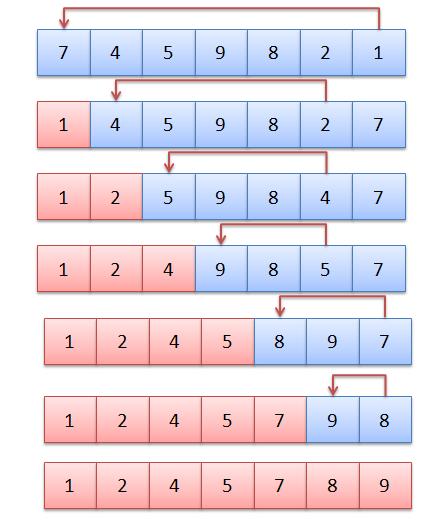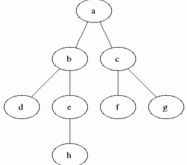Sorting techniques are essential in organizing data efficiently. There are two primary categories: internal sorting, which deals with smaller datasets that fit into main memory, and external sorting, suitable for larger datasets residing on external storage. In this comprehensive guide, we’ll explore these techniques in-depth and provide valuable insights into their applications and benefits.

The most-used orders are numerical order and lexicographical order. Efficient sorting is important for optimizing the use of other algorithms (such as search and merge algorithms) which require input data to be in sorted lists; it is also often useful for canonicalizing data and for producing human-readable output. More formally, the output must satisfy two conditions:
1. The output is in non decreasing order (each element is no smaller than the previous element according to the desired total order);
2. The output is a permutation (reordering) of the input.
Sorting is a fundamental concept in computer science and data management. It involves arranging a collection of elements in a specific order, which can be ascending (from the smallest to the largest) or descending (from the largest to the smallest). The need for sorting arises in various computational tasks, including searching, merging, and presenting data in a human-readable format.
Efficient sorting is crucial for optimizing the performance of many algorithms. When data is sorted, it becomes easier to search for specific elements using techniques like binary search, and it simplifies the process of merging two sorted lists. Moreover, sorted data often leads to more organized and user-friendly outputs in various applications.

To formalize the concept of sorting, we establish two essential conditions that the output must satisfy:
Sorting Techniques – Conditions
- Non-decreasing Order: In a sorted list, each element should be greater than or equal to the previous element, according to the desired total order. For example, in ascending numerical order, each number is greater than or equal to the one before it.
- Permutation of the Input: The output must be a permutation, which means a reordering, of the input data. Sorting does not change the elements themselves; it only changes their order within the list.
Now, let’s dive deeper into the two main categories of sorting:
Sorting Techniques:Internal Sorting
Internal sorting, as the name suggests, is employed when the number of objects or elements is small enough to fit comfortably into the computer’s main memory (RAM). Since accessing data in main memory is significantly faster than retrieving it from external storage like hard drives, internal sorting techniques are optimized for speed and efficiency.
Common internal sorting algorithms include:
- Bubble Sort: A simple but less efficient algorithm that repeatedly steps through the list, compares adjacent elements, and swaps them if they are in the wrong order.
- Insertion Sort: This algorithm builds the final sorted array one item at a time. It is efficient for small datasets.
- Selection Sort: Another straightforward technique that sorts an array by repeatedly finding the minimum element and moving it to the beginning.
- Quick Sort: A highly efficient and widely used algorithm that employs a divide-and-conquer strategy to sort data.
- Merge Sort: Known for its stability and efficiency, merge sort divides the array into smaller sub-arrays, sorts them, and then merges them back together.
Sorting Techniques: External Sorting
External sorting comes into play when dealing with a massive number of objects or elements that cannot entirely fit into the computer’s main memory. In such cases, portions of the data reside in external storage, such as hard drives or solid-state drives. External sorting algorithms are designed to minimize the input/output (I/O) operations, which are significantly slower than memory access.
Prominent external sorting techniques include:
- Multiway Merge Sort: This method involves dividing the data into smaller chunks, sorting them in memory, and then merging them using a priority queue or a similar data structure.
- Polyphase Merge Sort: A variant of merge sort specifically optimized for external sorting, where data is divided into multiple phases of sorting and merging.
- Replacement Selection: An algorithm that selects records from the input and sorts them into output blocks, replacing the selection with new records until all data is sorted.
- B-Trees and B+ Trees: These tree structures allow for efficient sorting of large datasets by minimizing the number of I/O operations.
In summary, sorting is a fundamental operation in computer science, and understanding the two main categories—internal sorting for smaller datasets in main memory and external sorting for larger datasets residing in external storage—is essential for optimizing data manipulation tasks. Different sorting algorithms have their strengths and weaknesses, making them suitable for various scenarios. The choice of sorting technique depends on factors such as the size of the dataset, available memory, and desired performance.
Read more on Data Structures here.
Check the Sorting techniqies and other material here.
 IT2EDU Empowering Education Through Technology
IT2EDU Empowering Education Through Technology



